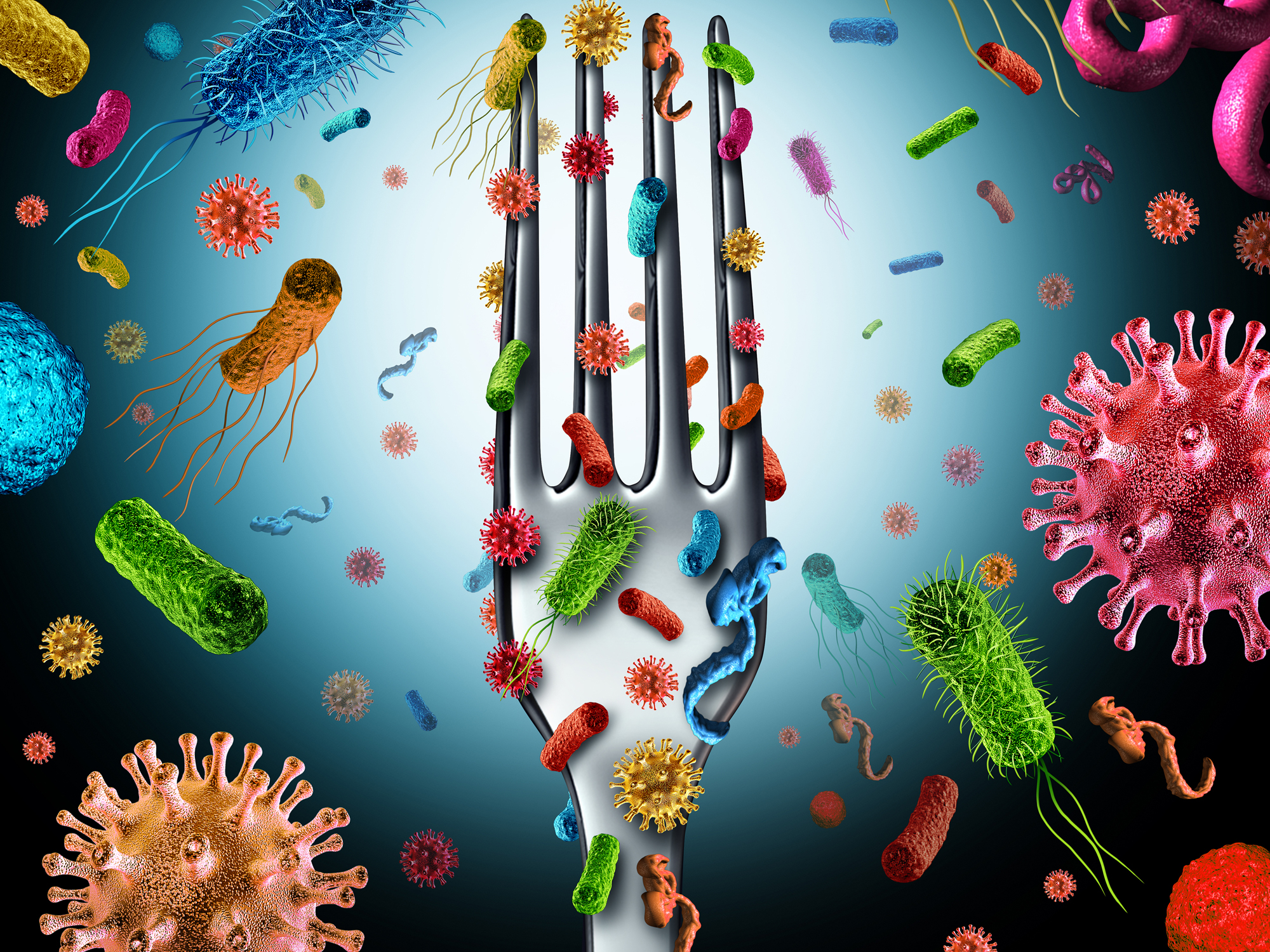Get Easy Health Digest™ in your inbox and don’t miss a thing when you subscribe today. Plus, get the free bonus report, Mother Nature’s Tips, Tricks and Remedies for Cholesterol, Blood Pressure & Blood Sugar as my way of saying welcome to the community!
5 Common types of food poisoning and how to avoid them

We usually spend our time here telling you all about the wonders of food, how it can heal and protect you, and how choosing the right foods can help you live a longer, healthier and more active life.
But if you’ve ever had a case of food poisoning, you know that even healthy foods can make you sick, if they’ve been contaminated with the wrong bacteria.
If you’ve ever eaten a bad piece of food and paid the price, you know the misery of the stomach cramping, vomiting and diarrhea that can go with a case of food poisoning.
In some cases, though, eating the wrong food can have much, much more serious consequences than spending the night in the bathroom.
For this reason, it’s crucial that you know about the bacteria that can cause food poisoning, and how to avoid them.
Here are five of the most common culprits.
1. Listeria
Listeria monocytogenes is a bacterium that is usually ingested by eating raw fruits and vegetables and unpasteurized dairy products made with raw milk, such as yogurt and soft cheeses. It also can be found in processing plants that produce deli meats and hot dogs.
According to the CDC, people age 65 and older are four times more likely to get Listeria infections, and to develop a serious case that can lead to infection of the bloodstream (sepsis) or brain (meningitis and encephalitis).
Symptoms include fever, muscle aches, and diarrhea. If it spreads to the nervous system, headache, loss of balance, stiff neck, confusion and convulsions may occur.
How to protect yourself: Scrub raw produce, dry before cutting and store at 40 degrees or colder. Wash surfaces that come in contact with raw melons. Check for the word ‘pasteurized’ on dairy food labels. Never keep deli meats past their due date.
2. Salmonella
Salmonella can infect any food, but it’s found mostly in poultry, meat and eggs. The CDC estimates that 1.2 million illnesses are caused by salmonella each year, as well as 23,000 hospitalizations, usually for uncontrolled diarrhea.
Symptoms of salmonella mainly involve diarrhea and cramping that lasts 4-7 days. However, a small number of people develop joint pain, known as reactive arthritis, as well as eye irritation and painful urination.
How to protect yourself: Never eat raw or lightly cooked eggs. Cook poultry to 165 degrees to kill any possible Salmonella bacteria. Wash hands, cutting boards and work surfaces thoroughly after handling raw meat.
Salmonella has become more common in produce and a variety of processed foods. Wash and dry all produce and store at 40 degrees or colder. Never use processed foods that have been recalled.
3. E. coli
Raw beef, unpasteurized juices, and fresh greens are where e. coli lurk. The bacteria live in the intestines of cattle and can infect raw meat during processing. Unpasteurized juice or cider has not been heated enough to kill e. coli., and fresh greens are infected if fertilizer or water used to grow them has been contaminated.
Symptoms of an e. coli infection are severe stomach cramps, bloody diarrhea, vomiting and sometimes fever, lasting up to a week. More severe cases lead to kidney complications.
How to protect yourself: Cook meat to 160 degrees, with no pink. Never put cooked meat on a plate that held raw meat. Wash utensils, surfaces and hands thoroughly. Only drink pasteurized juice or boil raw cider before drinking. Wash individual leaves of green produce and cook thoroughly.
4. Botulism
A rare but potentially fatal illness, botulism is caused by a toxin that attacks the nervous system. It is usually contracted by eating improperly canned, fermented or preserved foods that have provided the warm, low-oxygen environment favored by Clostridium botulinum.
Botulism usually starts with weakness of muscles that control the mouth, eyes, and throat, then spreads to the neck, arms, torso and legs, and breathing muscles.
Symptoms: Double or blurred vision, drooping eyelids, slurred speech, difficulty swallowing, thick-feeling tongue, dry mouth, muscle weakness. If you or someone you know experiences these symptoms, go to an emergency room immediately.
How to protect yourself: Discard cans that are bulging, leaking jars, and foul-smelling preserved foods. If liquid spurts out when opening a can or jar, discard it. Sterilize home-canned foods by cooking at 250 F for 30 minutes.
Never give honey to children under 12 months, even for a cough. Honey can contain spores of Clostridium botulinum that will germinate in a baby’s immature digestive system and cause botulism.
5. Vibrio Vulnificus
If you’re a seafood lover, pay attention to this one. Vibrio Vulnificus is a type of bacteria that lives in warm sea water and contaminates shellfish, especially oysters.
Symptoms are similar to the gastrointestinal troubles of other types of food poisoning. However, for people with weakened immune systems it can lead to a life-threatening case of sepsis.
How to protect yourself: Throw away any shellfish that doesn’t open during cooking, such as clams or mussels. Never eat raw shellfish. Frying, baking, boiling and steaming are good ways to reduce the risk of infection.
Sources:
- 20 Ways You Can Get Food Poisoning — WebMD
- Listeria (Listeriosis) — Centers for Disease Control and Prevention
- Salmonella — Centers for Disease Control and Prevention
- E.coli (Escherichia coli) — Centers for Disease Control and Prevention
- Botulism — Centers for Disease Control and Prevention













